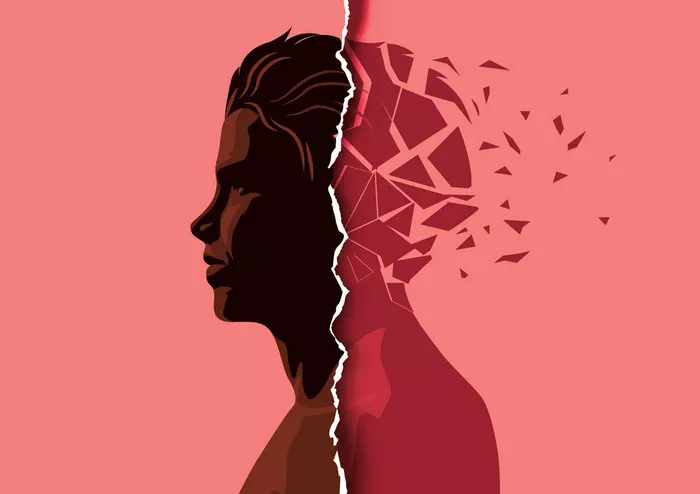The Mystery of Schizophrenia
Affecting approximately 1% of the world’s population, schizophrenia is a relatively rare disorder. However, its effects are far-reaching, often resulting in severe disability and requiring long-term treatment and support. The exact cause of schizophrenia is unknown, but it is believed to be caused by a combination of genetic, biochemical and environmental factors. Research suggests that abnormalities in brain structure and chemistry, particularly dopamine and glutamate, play a crucial role in the development of schizophrenia.
Schizophrenia typically develops in late adolescence or early adulthood, with males typically developing earlier than females. Symptoms are often divided into positive symptoms (hallucinations, delusions), negative symptoms (apathy, lack of emotion) and cognitive symptoms (impaired memory and attention). The presentation of these symptoms can vary greatly, so schizophrenia is divided into different types of subtypes.
See also: What are the 10 Symptoms of Schizophrenia?
Paranoid Schizophrenia: Grand Hallucinations
Features and Symptoms
Paranoid schizophrenia is perhaps the easiest type to identify, and is often characterized by significant delusions and auditory hallucinations. People with this subtype may believe they are being persecuted, spied on or conspired against. These delusions are often elaborate and methodical, leading to a general feeling of fear and distrust in the sufferer.
Auditory hallucinations are also common, where the sufferer hears voices that others cannot hear. These voices may comment on the sufferer’s behavior, issue commands, or talk to each other. Unlike other forms of schizophrenia, patients with paranoid schizophrenia often maintain a high level of cognitive function and do not display overt disorganization in speech or behavior.
Internet Phenomenon
In today’s digital age, manifestations of paranoid schizophrenia can have an interesting intersection with online culture. Conspiracy theories proliferate online, and people with paranoid schizophrenia may find confirmation or further confusion in these digital echo chambers. The internet can be a double-edged sword, providing both a sense of community and a breeding ground for delusional beliefs.
Treatment and Management
Treatment of paranoid schizophrenia often requires a combination of antipsychotic medications and psychotherapy. Cognitive behavioral therapy (CBT) can help sufferers challenge and reshape their delusional thinking, while medications such as risperidone or olanzapine can reduce the intensity of hallucinations and delusions. Social support and psychoeducation are also crucial to help patients navigate daily life and maintain relationships.
Disorganized Schizophrenia: Disorganized
Features and Symptoms
Also known as adolescent schizophrenia, disorganized schizophrenia is characterized by severely disorganized thought processes and behaviors. People with this subtype may experience incoherent speech, jumping from one topic to another without logical connections, often described as “talking incoherently.” Their behavior may be bizarre or inappropriate, and they may have difficulty carrying out daily activities and self-care.
Emotional responses may be flat or inappropriate, such as laughing at sad events or having no reaction to breaking news. This disorganization extends to the ability to function in daily life, often leading to severe impairment in both personal and professional spheres.
Meme Culture Connection
In an age of memes and viral videos, disorganized schizophrenia may be misunderstood or trivialized. While internet culture often celebrates randomness and absurdity, the reality of disorganized schizophrenia is far from funny. The disconnected thinking and behavior seen in this subtype is a symptom of severe cognitive and emotional distress.
Treatment and Management
Treatment of disorganized schizophrenia focuses on antipsychotic medication to help manage symptoms and psychotherapy to improve social and occupational functioning. Rehabilitation programs, including vocational training and life skills development, are essential to help patients regain a sense of independence and purpose. Family therapy and support groups can also play an important role in providing a support network.
Catatonic Schizophrenia: The Silent Struggle
Features and Symptoms
Catonic schizophrenia is a less common subtype, but its symptoms are very severe. People with catatonic schizophrenia may exhibit extreme behaviors: either complete inability to move the body (catatonic stupor) or excessive movement without purpose (catatonic agitation). They may also exhibit wax-like dexterity, holding positions that others have placed them in, and echolalia or mimicking movements that mimic speech or actions.
The catatonic state can be extremely distressing and dangerous, as it often impairs the patient’s ability to eat, drink, or perform basic self-care. This subtype of schizophrenia requires immediate and intensive medical intervention.
Social Media Mirror
Social media platforms occasionally post viral content that depicts unusual or extreme behavior, sometimes labeled as “crazy” or “insane.” Such depictions can inadvertently stigmatize people with catatonic schizophrenia and reduce their experiences to a farce. Understanding the profound suffering and neurological underpinnings of this subtype can foster greater empathy and reduce harmful stereotypes.
Treatment and Management
Catatonic schizophrenia often requires hospitalization and intensive treatment. Benzodiazepines, such as lorazepam, are often used to relieve catatonic symptoms. In severe cases, electroconvulsive therapy (ECT) may also be used to quickly relieve symptoms. Long-term treatment includes antipsychotic medications and supportive care to address a wider range of schizophrenia symptoms. Ensuring a safe and structured environment is essential for the well-being of people with catatonic schizophrenia.
Conclusion
Schizophrenia is a multifaceted disorder that manifests in a variety of forms, each with unique challenges and symptoms. Paranoid, disorganized, and catatonic schizophrenia represent three major subtypes, each requiring a tailored approach to treatment and support. By exploring the different characteristics of each type, we can better understand the lived experience of patients and work to reduce stigma and improve care.
In doing so, we can create a more inclusive and supportive society for individuals dealing with this complex condition.
Related articles:
Schizophrenia Untreated: Consequences and Controversies
Is OCD and Schizophrenia Related?
Understanding Mental Health: A Comprehensive Guide


